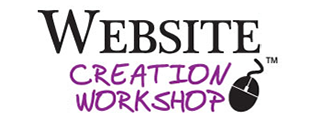Are you in the process of building a website for your business but unsure where to start? Maybe you’re stuck because you’ve never created a website, or your current website isn’t generating the desired results. You need to know the essential pages of a successful website, and I can help!
Building an effective website can be overwhelming, especially for those who are new to it. While replicating a big brand’s website is tempting, many websites have unnecessary features that aren’t necessary for a small business or solopreneur.
Planning Out Your Website
I’ve created a report/checklist that outlines the essential pages every client-attracting website should have. This checklist will help you prioritize the pages you should create first and the ones that can wait until later.
By following this guide, you can build a website that drives results and attracts more clients and customers. So, let’s dive into the essential pages of a client-attracting website!
Think about the big picture or structure of your website. Your main website is your authority site, which is composed of pages: your Home page, Services, About, Contact, and Blog.
The Essential Pages of a Successful Website
Here’s a wireframe visual image of a typical website. This is what web designers create to plan out a website! And you can use this same thinking to plan out your site.
#1 – About Page
Also known as your bio page, you show who you are, who you serve, and why people want to work with you. You want to ensure you have your photo and full name. This is one of the most common mistakes I see on websites.
It’s hard to connect with a prospect if they don’t know what you look like and don’t know your last name! Your photo and full name are two of the five essential things your Author Page should have.
#2 – Services Page
You spell out the services you offer people- coaching, consulting, or in-person vs. live options. If you sell products instead, you can call your page products and have your products listed. Or, perhaps you have courses.
#3 – Contact Page
List the methods you want people to use to contact you. You could include a phone number, email, and physical address. Do NOT put your home address. Leave your physical address off the webpage if you don’t have a PO box or UPS mailbox.
You could also include a contact form for people to fill out. A contact form has five important elements.
#4 – Blog Page
You don’t have to have a blog on your website, but it’s a fantastic way to stay in front of your target audience.
A blog, sometimes called a newsletter, is a way to market yourself by writing articles about the common issues that people in your market have.
Then, you can share it through email or social media to drive people back to your website. Some great tools are available to help you write top-quality blog content.
One of my students used her blog page to write success stories from her clients. You could also use your blog to post upcoming events, podcast episodes, or other valuable content to your audience.
#5 Home Page
It’s counterintuitive, but I always recommend building your home page last. Everything will become clearer as you put the pieces together for your About page, Services or Products page, Blog page, and Contact page.
It will be easier to build your home page if you wait until the end. By that point, your website is almost complete. You better understand your website’s goals, purpose, and vision.
>> Get Your Free Website Creation Checklist Here
It’s called the “Essential Pages of a Successful Website.”
Be sure to sign up to attend the live webinar (you get after opt-in) that goes with the PDF guide. In the live webinar, I’ll walk you through the essential web pages you need to attract your ideal clients. Get immediate access now!






































